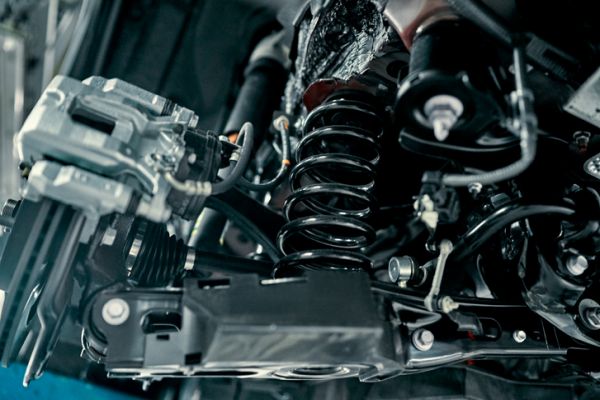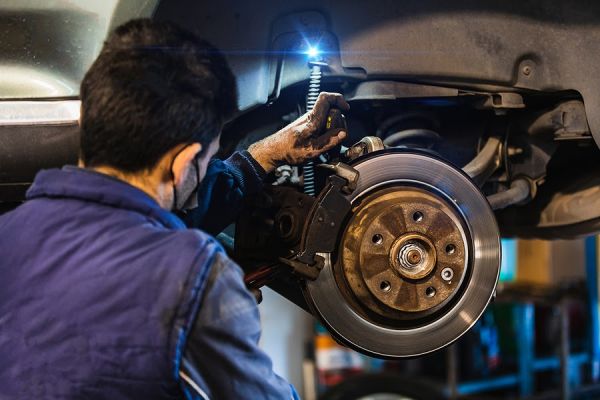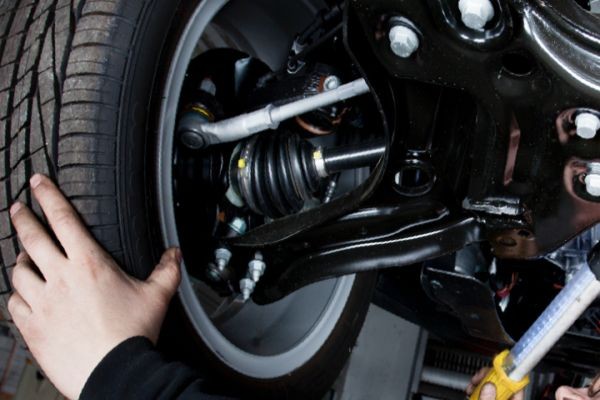The shock absorber, or more correctly, damper, is a hydraulic or pneumatic device that operates up to 1900 times per mile to stabilize a vehicle's handling and generate as much contact between the road and tires as possible.
Without a shock absorber fitted, your springs would contract and expand continually till the energy stored in them is dissipated. This would make for one hell of a bouncy ride, with handling that is completely unpredictable.

A brief history of the Shock Absorber
Early cars were fitted with friction disc dampers, which were incredibly basic and shook passengers to the core. These were made up of interconnected arms that were separated by a leather friction material, helping to bring spring movements under control.
The Gabriel Suspension company claim to have invented the world's first hydraulic shock absorber in 1918. By the 1930s, hydraulic dampers became standard equipment.
Technically speaking, shock absorbers are a form of a linear dashpot mechanism.
How does a shock absorber work?
Shock absorbers come in a number of different formats, such as:
- Monotube
- Twin tube
- Gas-filled monotube
- External reservoir
These two are available in many different shapes and sizes, such as struts (McPherson), traditional telescopic dampers, and cartridge types. Damper bodies have numerous different fixings that vary from vehicle to vehicle, with bayonet and ring mounts, integral bushings and bar mounting fittings to name just a few.
All dampers work around the same basic principle. As the control arm or wishbone moves to accommodate differences in the road surface, those initial shocks are cushioned by the spring. The spring technically is doing the shock absorbing. The compressed spring now has a store of kinetic energy and the tension of the coil causes the spring to expand, then contract, and so on, with this process repeating until the energy has faded away.
The damper turns the kinetic energy of the spring into heat. This is achieved by filling the cylinder body with oil and having a piston that has a plunger fixed to the end. At the end of the plunger are a number of holes that control how much oil flows between the two chambers in the damper.
This brings the spring oscillations under control, the resistance within the damper creating heat. The heat is then passed from the body into the atmosphere and the conversion from kinetic to thermal energy is complete. After driving on a rough surface, you may notice that you shock bodies are actually warm to the touch.
What else does the suspension system do?

Not only does the suspension system keep the wheels firmly in contact with the ground, it also performs a number of other important roles:
BRAKING NOSE DIVE CONTROL
As weight transfers forwards due to momentum under braking, the suspension helps to resist this shift and balance the weight transfer.
BODY ROLL
Left unchecked, a body would lean away from the direction of travel. This shifts weight and reduces grip. The suspension system helps support the body and resist the rolling motion.
ACCELERATION SQUAT
Powerful track cars will experience what is essentially the opposite of nose-diving, where the front end lightens and raises under acceleration. The shocks will help counter this force.
TRACTION LOSS
Traction loss can happen for a number of reasons, but in one bumpy road, the suspension forces the tires into contact with the ground, increasing grip.
BOTTOMING OUT
On cars with low ride height, you may experience scraping or bottoming out, where the body or tub of the car comes into contact with the track. The suspension will help prevent this.








